Medical incapacity as likely as not cause of fatal accident near Masterton in April 2020. On take-off, an agricultural aircraft ran off a farm airstrip. It struck rough ground, undercarriage broke, damaged a wing, plunged over a steep drop off, was wrecked on impact with floor of valley beyond and caught fire. The sole pilot occupant did not survive. No new safety issues, no new recommendations.
Executive summary Tuhinga whakarāpopoto
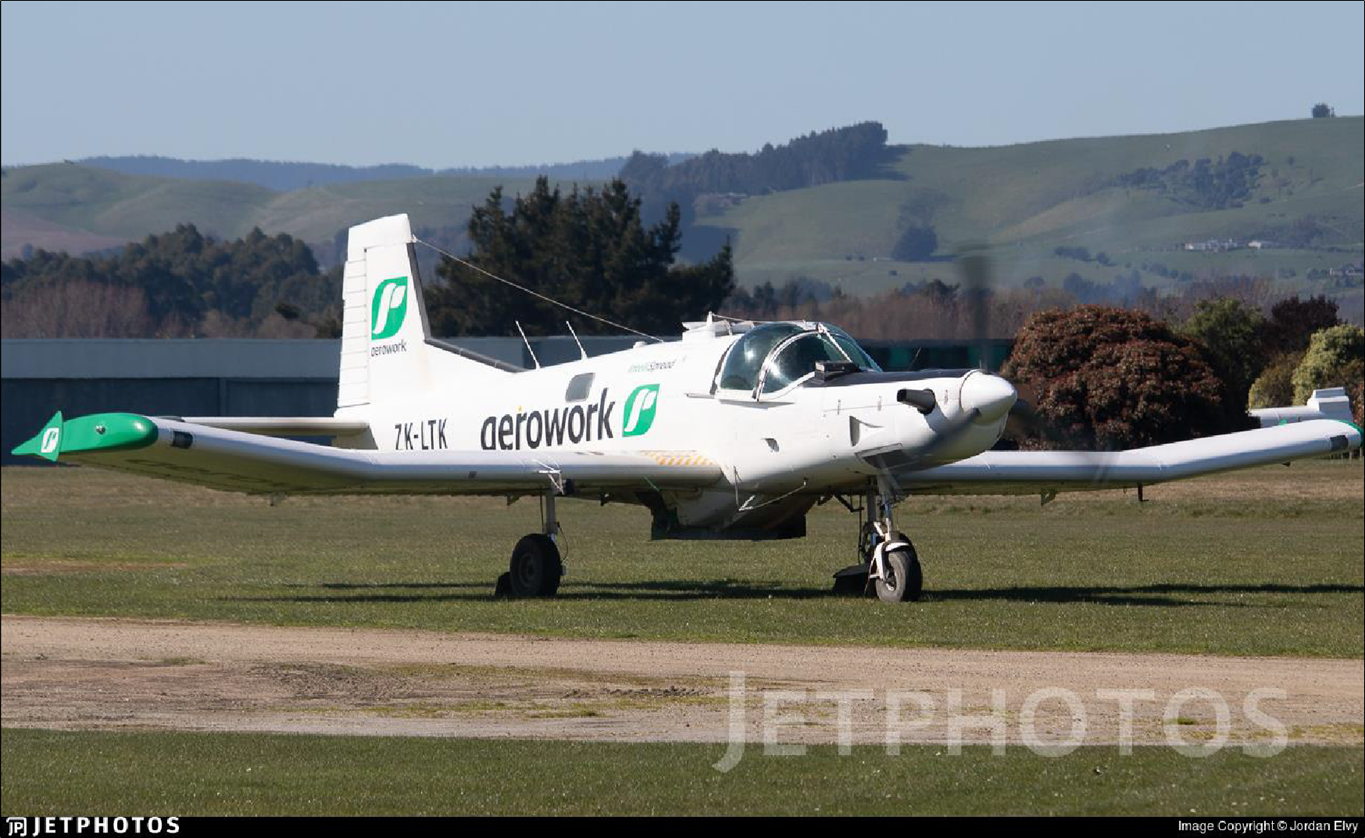
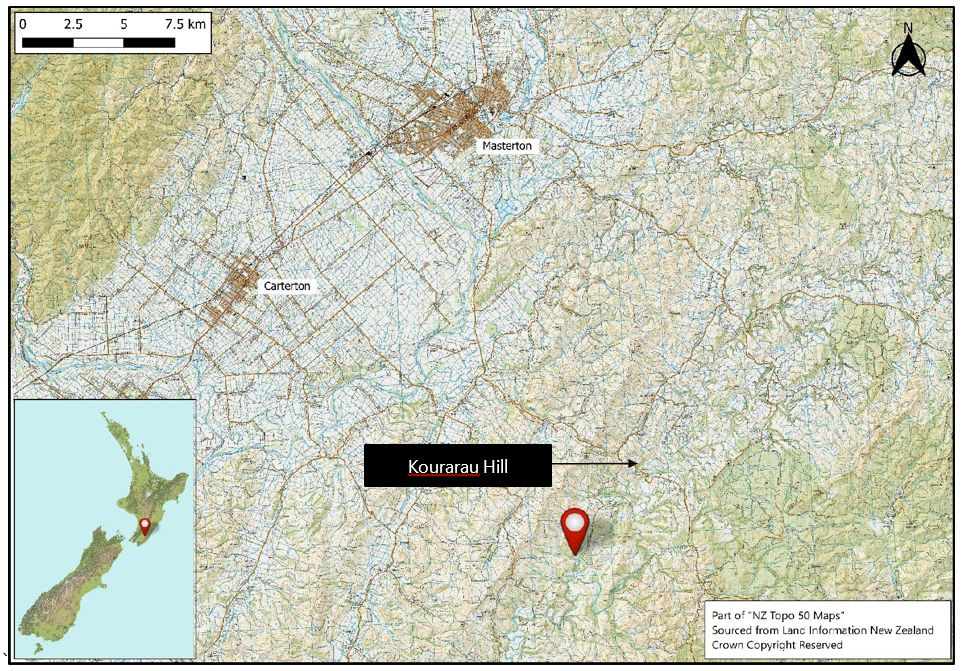
What happened
- On 24 April 2020 the pilot of a Pacific Aerospace Cresco 08-600 aircraft, registered ZK-LTK (the aeroplane), was conducting agricultural flight operations spreading superphosphate fertiliser on a farm in the Kourarau Hill area, near Masterton.
- The airstrip was a typical topdressing airstrip, with a downward slope and a left bend of about 5 degrees partway down the strip, in the direction of take-off. The ground at the end of the airstrip dropped sharply away to a valley that ran perpendicular to the direction of the airstrip.
- On the commencement of the third topdressing flight, witnesses reported, the aeroplane accelerated normally from the loading point. However, the aeroplane did not follow the direction of the airstrip around to the left, as it had done during the previous two flights. Instead, the aeroplane continued in a straight line from the load point and subsequently struck uneven terrain off to the right of the airstrip. The impact with the uneven terrain caused the right main undercarriage assembly to fracture off and damage the right wing and flap.
- The aeroplane descended into the valley, striking a tree with the right-hand wing, then continued across the valley floor and impacted the far side of the valley, coming to rest inverted.
- The aeroplane was destroyed by the impacts and a post-crash fire. The sole pilot occupant did not survive the accident sequence.
Why it happened
- After departing the loading point, the aeroplane did not turn to align with the airstrip direction, as it had on previous occasions. The evidence did not show any attempt by the pilot to correct this deviation from the previous, and ideal, two take-off paths.
- The absence of any corrective action by the pilot, including discontinuing the take-off, correcting the take-off path after encountering uneven and rough ground, dumping the load and/or making a radio call to the loader driver, could indicate the pilot was incapacitated and therefore was incapable of performing such actions.
- The aeroplane’s veering off the airstrip and striking rough terrain caused the right main undercarriage attachment bolts to break and the complete undercarriage assembly to separate. The undercarriage assembly then struck and partially dislodged the right wing flap.
- The Transport Accident Investigation Commission (the Commission) examined a range of factors that either singularly or in combination may have caused the accident, including weather, mechanical, aircraft load, airstrip and medical factors. All factors, except medical, were discounted as possible contributing factors.
- Because of the lack of evidence available to the investigation, the reason for the aeroplane’s deviation from the normal flight path could not be determined conclusively.
- After an extensive analysis of the available evidence, including no evidence of any action being taken after the aeroplane deviated, the Commission concluded that it is about as likely as not that the pilot was incapacitated. There was no definitive evidence to support this finding directly; rather it was reached through a process of eliminating the unlikely scenarios.
What we can learn
- No new safety issues were identified, and no recommendations have been made.
Factual information Pārongo pono
Narrative
- On 24 April 2020, the pilot of a Pacific Aerospace Cresco 08-600 aircraft, registered ZK-LTK (the aeroplane), was conducting agricultural flight operations spreading superphosphate fertiliser on a farm in the Kourarau Hill area, near Masterton. The pilot departed Hood Aerodrome, near Masterton, at 0643 (times are in New Zealand standard time (co-ordinated universal time + 12 hours) and expressed in the 24-hour format) and landed at the farm airstrip from which they would be operating at 0655. The farmer and a loader driver were on site and beginning the set-up for the day when the pilot arrived. The farmer remained at the airstrip to observe the operation and to take photographs.
- Spreading operations commenced at 0700, with the first and second flights taking about four minutes each, with about a one-minute turnaround to reload between flights. The loader driver reported talking to the pilot on the radio during the first two flights. The take-off path used for the first two flights had a left turn of about 5 degrees, approximately a third of the way down the take-off roll from the loading point (see Figure 3).
- The third flight take-off roll commenced at about 0710 with the same weight of product as loaded in the previous two flights. The aeroplane was observed by witnesses to accelerate normally. Wheel marks on the airstrip indicated the aeroplane did not turn left as required. Rather it continued in a straight line from the loading point area, crossing increasingly uneven and rough terrain.
- The aeroplane impacted solid terrain off to the right-hand side of the airstrip. The right main undercarriage was seen to separate from the aeroplane at this time. The aeroplane then descended into the valley, striking a tree on the valley floor with the right-hand wing, dislodging the outer part of the wing. The aeroplane then rolled inverted and continued across the valley floor. The aeroplane impacted the ground at the base of the up-sloping terrain, sliding a further 20 metres up the slope. A subsequent fire destroyed most of the wreckage.
- The pilot did not survive the accident sequence.
- An agricultural pilot from another company, who was operating nearby, noticed the smoke from the wreckage and landed on the same airstrip soon after the accident to render assistance if possible. A local helicopter pilot operating in the vicinity at the time also attended the scene to render assistance.
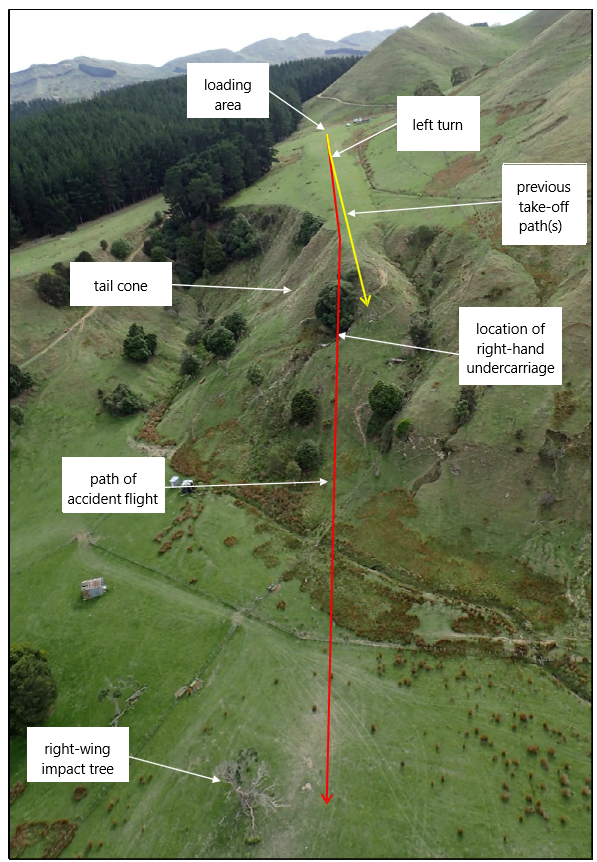
Site information and damage to the aeroplane
- The aeroplane was destroyed as a result of its striking the tree, and the ground impacts. A post-impact fire consumed much of the wreckage. The remaining wreckage, other than the outboard portion of the right wing and right main undercarriage, was distributed over a relatively small area at the impact site. See Figure 3, Figure 4 and Figure 5. An examination of the wreckage and accident site identified:
- the aeroplane was found inverted about 20 metres up slope from the final impact point
- all available flight-control-system components were assessed for control continuity and function, with no pre-existing defects identified
- the propellor blades, located at the final point of impact, showed rotational damage, indicating the engine was delivering power at the time of ground impact
- the outboard portion of the right wing was found near a tree located about 70 metres before the main wreckage site
- the right undercarriage leg and wheel, as a complete assembly, were found at the base of the slope at the end of the airstrip
- the tail cone was found down the slope, next to the end of the airstrip on the right-hand side (see Figure 3).
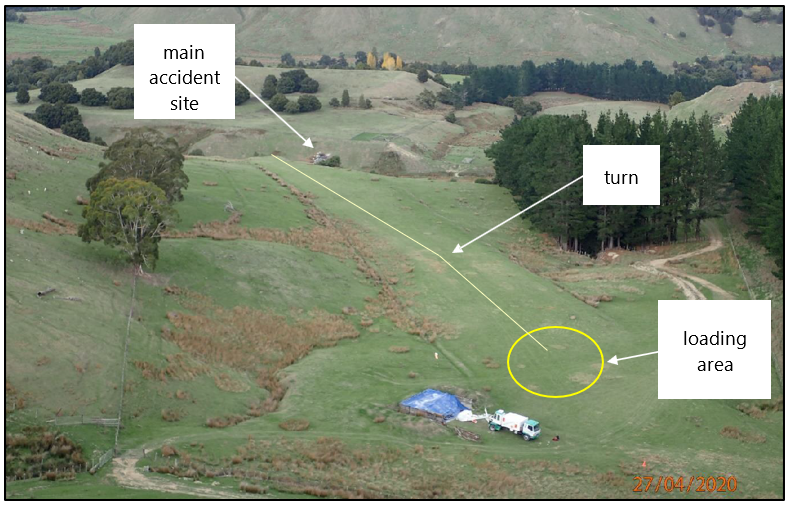
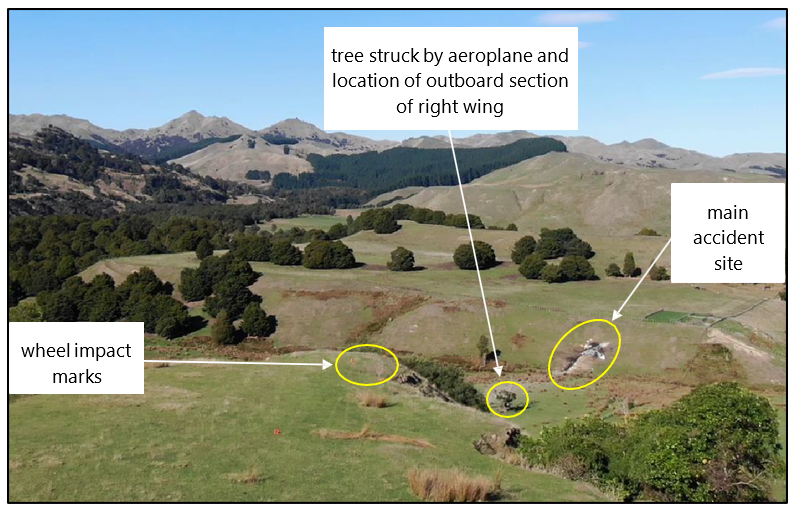
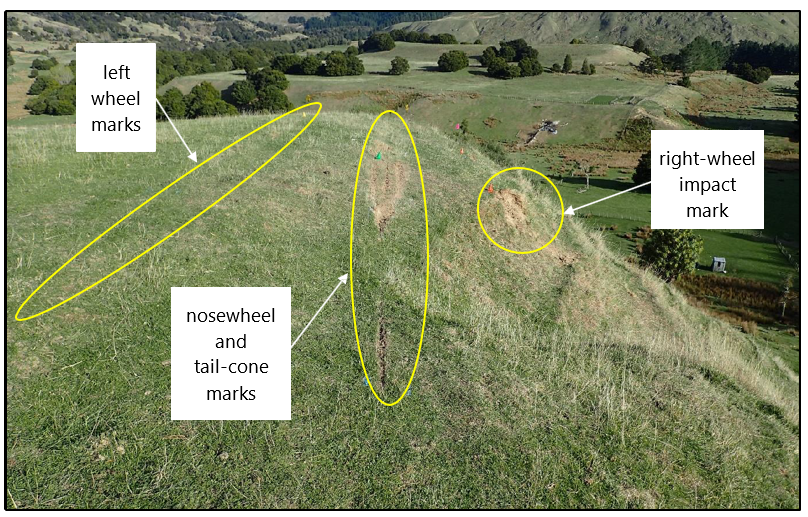
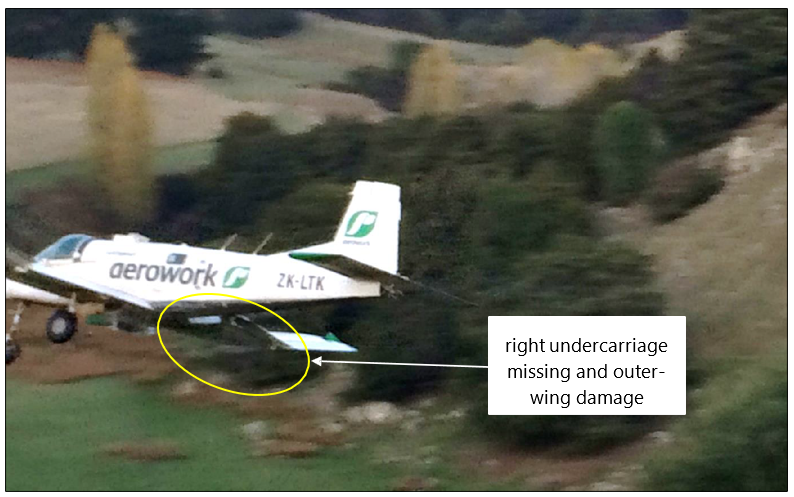
Personnel information
- The pilot, aged 55, held a Commercial Pilot Licence – Aeroplane with Agricultural Grade 1, Topdressing and Chemical Ratings.
- The pilot had more than than 15,000 hours’ total flying time, of which 12,000 had been agricultural flying, including more than 8,700 in the Pacific Aerospace Cresco 08-600.
- The pilot had flown about 20 hours in the previous seven days, and about 110 hours in the previous 28 days. The pilot’s most recent agricultural and pilot competency check on the Cresco had been completed six months before the accident, in October 2019.
- The pilot held a current Class 1 medical certificate for operations “other than single pilot air operations carrying passengers” (Civil Aviation Rules Part 67 – Medical Standards and Certification, section 67.61 states that a Class 1 medical certificate is valid for up to six months for single-pilot air operations carrying passengers if the applicant is 40 years of age or more, and 12 months in all other cases), valid until June 2020.
- The pilot had been with the Ravensdown Aerowork Limited (the operator), for more than 10 years and was one of the operator’s more experienced and senior pilots. They were well respected by fellow pilots.
- Witnesses stated the pilot appeared in good health on the day of the accident and expressed no concerns of anything unusual.
- The pilot’s medical history was reviewed by an aviation medical specialist, and nothing of relevance could be identified.
- The post-crash fire severely limited the autopsy examination. The examination was therefore inconclusive regarding identifying any potential contributing factors to the accident. Toxicology tests were negative for any performance-impairing substances.
Aircraft information
- ZK-LTK was a Pacific Aerospace Cresco 08-600, manufactured in 2002
- The Cresco was a New Zealand-built aeroplane with a low wing, fixed tricycle undercarriage and dual side-by-side controls, with the pilot occupying the right-hand seat. The hopper was mounted behind the pilot, with an an emergency load-jettison lever located by the pilot’s left thigh. This lever allowed the pilot to rapidly jettison the contents of the hopper in an emergency.
- The Cresco was powered by a 750-shaft horsepower Pratt & Whitney PT6-34 Ag turbine engine and fitted with a Hartzell three-bladed, constant-speed, full-feathering and reverse-pitch propeller
- The aeroplane’s most recent maintenance check had been a 150-hour inspection on 29 January 2020, at the operator’s own maintenance facility
Meteorological information
- At the time of the accident, the weather at Masterton Airport was recorded as:
- wind: 040 degrees magnetic at 3 knots (one knot equals one nautical mile (and 1.852 kilometres) per hour)
- QNH (mean sea level pressure): 1011 hectopascals
- temperature: 11 degrees Celsius
- dew point: 10 degrees Celsius
- visibility: 20 kilometres
- cloud: few (one-eighth to two-eighths of cloud coverage) 24,000 feet (7,315 metres) above ground level.
- Witnesses reported that the weather during the morning of the accident was fine with little to no wind.
Airstrip information
- The farm airstrip was located approximately 12 nautical miles (22 kilometres) south-south-west of Hood Aerodrome near Masterton. The farm airstrip was a one-way grass strip, orientated in a north-south direction and measuring 317 metres from the loading point to the end of the usable area, where it dropped away sharply.
- About 130 metres from the loading point, a left turn of approximately 5 degrees was required to remain in the centre of the airstrip. The terrain on both sides of the airstrip was rough and undulating.
- The usable area of the airstrip had recently been mowed in preparation for operations, in accordance with the operator’s airstrip preparation guidelines made available to clients.
- At the time of the accident the airstrip was not included in the operator’s airstrip register. Normal practice was to update the register during, or at the completion of, an operation. A pilot was responsible for making the final decision on the suitability and safety of an airstrip for operations.
Tests and research
-
The right main undercarriage separated from its mount point in the right wing as a whole assembly early in the accident sequence. To establish the likelihood of this being a causal factor in this accident, a specialist in metallurgy examined the right main undercarriage. The specialist determined that:
…The leg failed from the wing structure as a result of the wheel being forced backwards and upwards into the wing structure as a result of a single high load impact. Failure will have occurred to the lower support clamp before a significant bending load was applied to the upper bolts. There was no evidence of any pre-existing damage to the clamping system such as fatigue or significant loss of section due to corrosion.
Organisational information
- The operator held a Civil Aviation Rules Part 137 – Agricultural Aircraft Operations certificate issued by the Civil Aviation Authority of New Zealand. The operating certificate permitted the operator to conduct agricultural operations in accordance with its exposition.
- The operator had an internal check and training system as part of its Safety Management System.
- As part of the operator's quality assurance programme, the chief pilot conducted both announced and unannounced spot checks of base pilots. The operator conducted regular team meetings with all pilots, utilising online group meeting applications when face-to-face meetings were restricted by COVID-19 protocols.
- The operator, as part of its Safety Management System, had a database for recording farm airstrip details that included risk assessments. The database application was accessible to all of the operator’s personnel to enable them to enter and update details for each airstrip utilised. Due to the large number of airstrips and the infrequent use of some of those airstrips, not all airstrips had been recorded at the time of the accident. The policy was that a pilot would enter and provide details of, or update the database each time an airstrip was used. The pilot was using this airstrip for the first time since the database had been developed, so they would have been expected to enter the relevant details after using it.
Analysis Tātaritanga
Introduction
- The pilot was conducting a routine agricultural spreading operation when the aeroplane did not follow the required take-off path that had previously been taken, and hit uneven terrain, impacting the valley floor. An intense fire followed, destroying much of the evidence that would otherwise have been available to the investigation. Because of the lack of evidence, the reason for the aeroplane deviating from the normal flight path could not be determined conclusively.
- The following section analyses the circumstances surrounding the event to identify those factors that increased the likelihood of the event occurring or increased the severity of its outcome.
Avenues of inquiry
- The Transport Accident Investigation Commission (Commission) considered the available evidence, and in the analysis the following were considered for their likelihood as causal factors in this accident.
Fatigue
- Flight and duty records and interviews with the pilot’s family, the loader driver and the farmer suggest it was likely the pilot was well rested on the morning of the accident. The witnesses reported that the pilot’s demeanour prior to the accident had not indicated any cause for concern regarding their health or wellbeing, including stress levels and general fitness to fly.
Distraction
- There is no evidence to indicate the pilot was distracted during the take-off roll. It is likely that in the event of a distraction sufficient to cause a deviation from the previous ideal take-off path, there would have been some evidence of the pilot’s attempt to correct the deviation and return to the optimum take-off path. The pilot was by all accounts competent and experienced and should have been able to manage most distractions, for example an unanticipated radio call or a cockpit light, easily.
- Sunstrike. The early time of day (https://www.sunrise-and-sunset.com has sunrise at 0657 at Masterton), combined with high ground to the east of the airstrip and the high overcast cloud, resulted in flat light conditions at the time of the accident (see Figure 8). This made it exceptionally unlikely that the pilot suffered sunstrike during the accident sequence – noting that this was their third take-off in 10 minutes and there had been no previous problems reported or observed.

- Other visual distractions. Witnesses did not report any visual obstructions, for example birds or smoke in the cockpit, being present at the time of the accident. If the pilot had had a visual obstruction during the take-off roll, some evidence of it would have been expected, such as actions being taken to remedy the situation or evidence of avian debris.
- The Commission found no evidence that the pilot had become distracted or that their situational awareness had been compromised by external factors during the take-off roll.
Mechanical failure
- Powerplant. Witness reports and wreckage evidence show that is was very likely the engine had been delivering full power during the take-off roll and at the time of impact.
- Airframe. There was no evidence to indicate a failure of the aircraft system, such as a failure of flight controls or steering, during the take-off roll. Damage to the right-hand wing and flap after the undercarriage had been dislodged was considered highly likely to have been a consequence of the accident sequence, rather than a causal factor.
- Undercarriage. An expert analysis of the undercarriage attachment points showed that the undercarriage had been dislodged in a single high-impact event during the accident sequence and had been a result of the accident and not a causal factor. According to pilots experienced on this aircraft type, the subsequent damage to the control surfaces on the right-hand wing, and the dissymmetry of lift that resulted, would have made the aeroplane uncontrollable from that point onwards.
Overload
- The Commission conducted an independent verification of the accuracy of the load cell installed on the loader truck (the fertiliser product was examined and determined to be free flowing, enabling an emergency jettisoning of the load should this be demanded).
- The load records showed that the load of product on the accident flight, at 1,700 kilograms, was the same as in the previous two flights. The aeroplane would have therefore been lighter on the third take-off due to fuel consumption.
- A weight-and-balance calculation based on the recorded load for the flight confirmed the aeroplane had been within flight manual limits.
Pilot training and competency
- The pilot had most recently undergone a competency check in October 2019 (six months prior to the accident). The pilot was very experienced in agricultural operations and the Cresco type of aeroplane.
- The loader driver and other company pilots stated that the pilot had previously shown no reluctance in jettisoning loads if conditions required, and had done so on at least one occasion. It was normal practice for a pilot to move their left hand to the aeroplanes’ jettison handle once full power had been selected for take-off.
- Training and competency were therefore not considered causal factors in this accident.
Airstrip suitability
- Witness evidence was that the airstrip was suitable for agricultural operations on the day. This accident happened on the third flight of the day, and the pilot had not expressed any concerns to the loader driver or the farmer regarding the condition of the airstrip on the previous two flights. Another agricultural pilot who was working locally at the time of the accident, and who landed shortly after the accident to render assistance if required, commented that, in their view, the airstrip was a typical farm airstrip and posed no unusual hazards or challenges.
Organisational influences
- An examination of the operator’s Safety Management System, incident register, exposition and manuals, which contained its policies and procedures, did not identify any historical or systemic issues that may have been relevant to or causal factors in this accident.
Substance use
- Apart from caffeine, no other drugs were detected in the pilot’s blood during the toxicology examination conducted post-mortem.
Pilot incapacitation
- The absence of any corrective action by the pilot, including discontinuing the take-off, correcting the take-off path after encountering rough ground, dumping the load and/or making a radio call to the loader driver, could have indicated that the pilot was incapacitated and therefore was incapable of performing such actions.
- The lack of evidence of any corrective action, either singularly or in combination, suggests it is about as likely as not that the pilot was not able to take such actions. Such actions might have included a course correction, braking, emergency jettisoning of the load and/or a radio call.
- The Civil Aviation Authority of New Zealand has published Medical Information Sheet 012 – Medical Incapacitation on the range of conditions that can be classed as medical incapacitation (Civil Aviaton Authority of New Zealand, 2010). See Appendix 1.
Conclusion
- There was no evidence that the pilot attempted to take remedial action at any stage during the take-off sequence. A well trained and experienced agricultural pilot would be expected to recognise and take corrective action if their take-off path was to differ significantly from their previous take-off paths.
- After an analysis of the available evidence and after dismissing those potential causes deemed to be unlikely, it was found that it was about as likely as not that the pilot was incapacitated early in the take-off roll, prior to the point that a turn was required to maintain the optimum line on the airstrip. There was no definitive evidence to support this finding directly; rather, the finding was reached through a process of eliminating the unlikely scenarios.
Findings Ngā kitenge
- The pilot did not make the necessary left turn during the take-off roll to align with the strip centreline, so the aeroplane continued the take-off roll in a straight line.
- The right-rear undercarriage struck uneven ground with sufficient force to break the undercarriage mounting brackets and dislodge the undercarriage assembly from the aeroplane.
- The right main undercarriage subsequently struck the right flap, resulting in a partial dislocation of the flap. This very likely resulted in the aeroplane becoming uncontrollable.
- The pilot was about as likely as not to have been incapacitated early in the take-off roll.
Safety issues and remedial action Ngā take haumanu me ngā mahi whakatika
General
- Safety issues are an output from the Commission’s analysis. They typically describe a system problem that has the potential to adversely affect future operations on a wide scale.
- Safety issues may be addressed by safety actions taken by a participant, otherwise the Commission may issue a recommendation to address the issue.
- No new safety issues were identified.
Recommendations Ngā tūtohutanga
General
- The Commission issues recommendations to address safety issues found in its investigations. Recommendations may be addressed to organisations or people and can relate to safety issues found within an organisation or within the wider transport system that have the potential to contribute to future transport accidents and incidents.
- In the interests of transport safety, it is important that recommendations are implemented without delay to help prevent similar accidents or incidents occurring in the future.
New recommendations
- No new recommendations were issued.
Key lessons Ngā akoranga matua
- There are no key lessons.
Data summary Whakarāpopoto raraunga
Details
latitude:41°09´ 24” south
longitude: 175° 43´ 40” east
Conduct of the Inquiry He tikanga rapunga
- On 24 April 2020, the Civil Aviation Authority of New Zealand notified the Commission of the occurrence. The Commission subsequently opened an inquiry under section 13(1) of the Transport Accident Investigation Commission Act 1990 and appointed an investigator in charge.
- The accident and initial scene investigation occurred under COVID-19 Alert Level 4 restrictions. This did not limit the investigation but did place additional requirements and demands on investigators when accessing the site, conducting interviews and gathering other evidence.
- On 25 April 2020 three Commission investigators conducted an examination of the accident scene.
- On 27 April 2020 the wreckage was removed from the accident site and transported to the Commission’s technical facility in Wellington for further detailed examination.
- Between 25 and 27 June 2020 interviews were conducted with witnesses. Relevant documentation relating to maintenance and the operator was obtained.
- On 29 October 2020 interviews were conducted with the operator.
- On 24 November 2021 the Commission approved a draft report for circulation to three interested persons for comment.
- None of the Interested Persons wished to make comment on the draft report.
- On 22 February 2022 the Commission approved the final report for publication.
Glossary Kuputaka
- Farm airstrip
- A strip of ground set aside for the take-off and landing of aircraft
- Take-off roll
- The portion of the take-off procedure during which an aircraft is accelerated from a standstill to an airspeed that provides sufficient lift for it to become airborne.
- Main undercarriage
- A wheeled structure beneath an aircraft that supports the aircraft on the ground. Also known as the landing gear.
Citations Ngā tohutoru
Civil Aviation Authority of New Zealand. (2010, December). Medical certification.
Retrieved from Civil Aviation Authority of New Zealand: https://www.aviation.govt.nz/assets/publications/medical-information-sheets/mis012-medical-incapacitation.pdf
Appendix 1. Civil Aviation Authority Medical Information Sheet – Medical Incapacitation (CAA MIS 012)
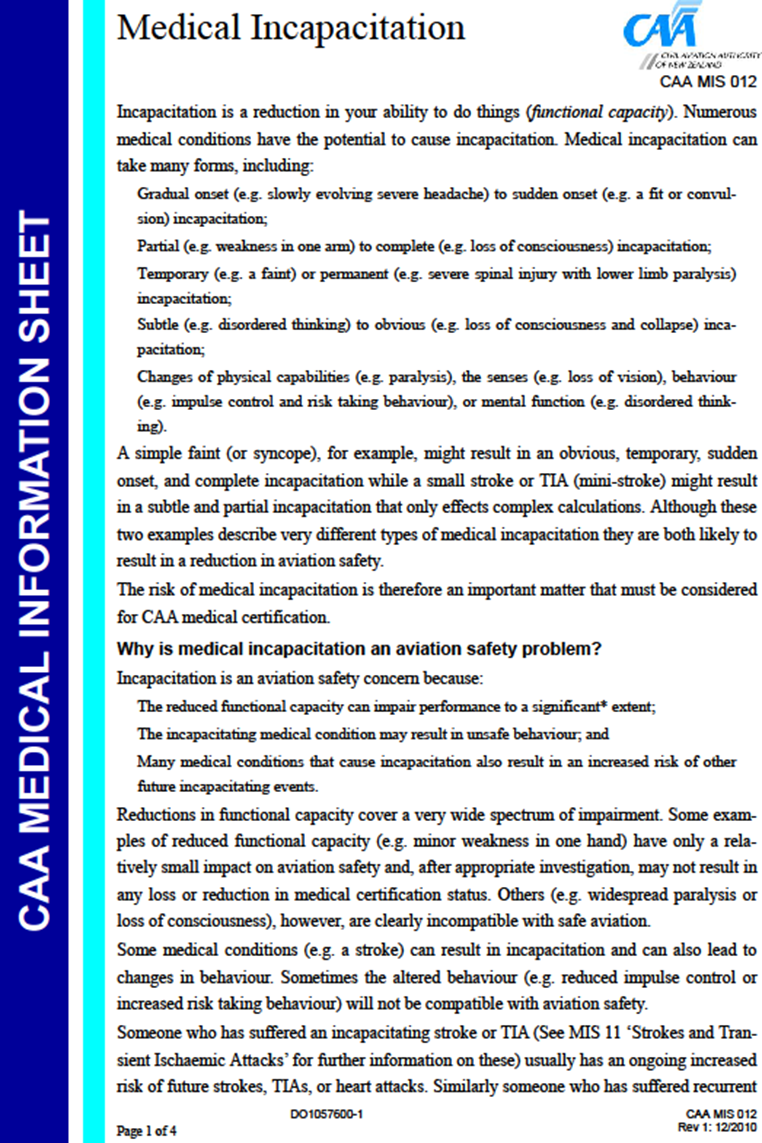
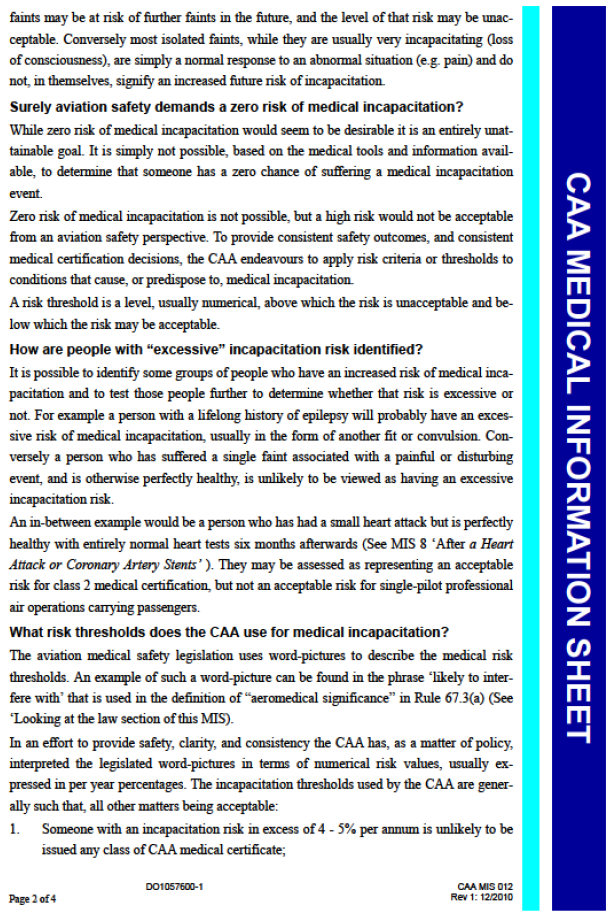
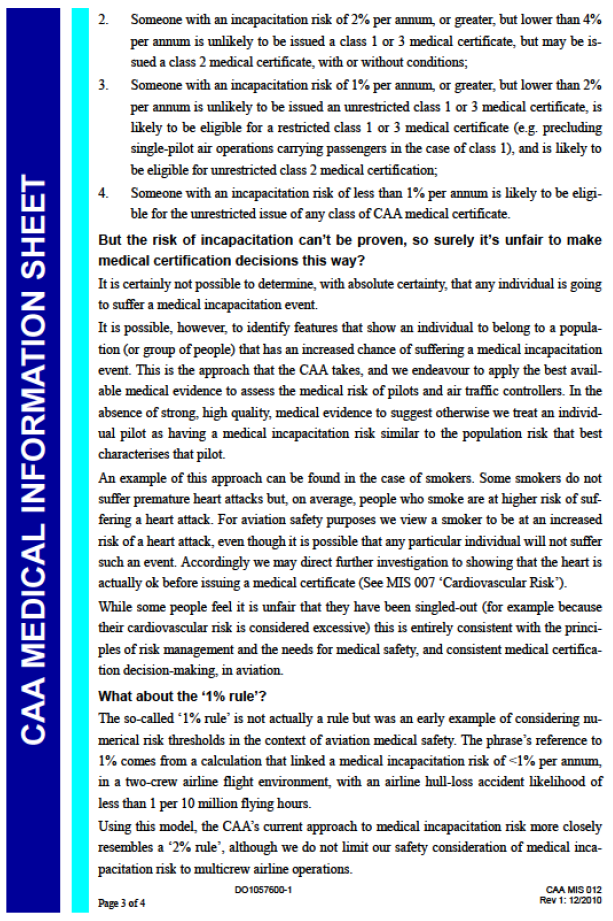
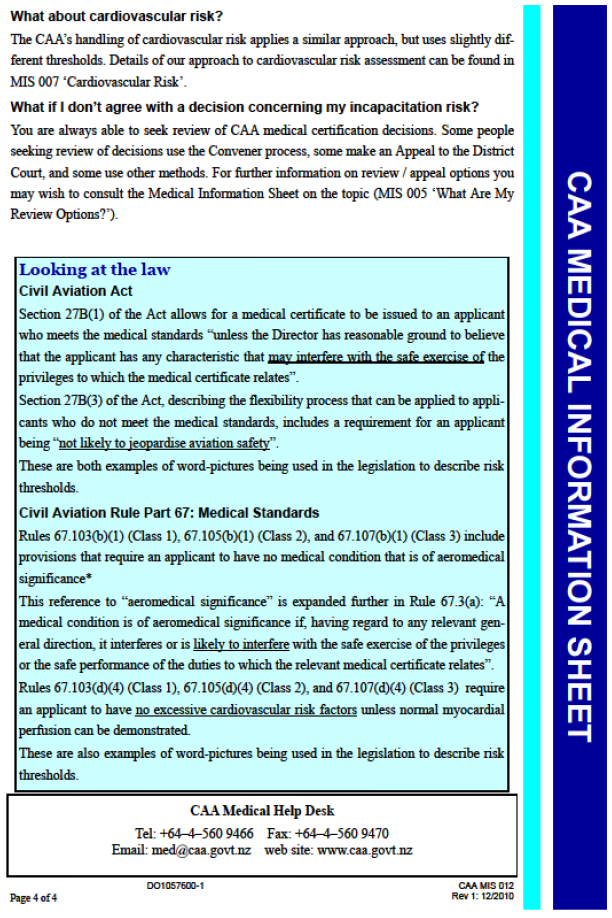
.
